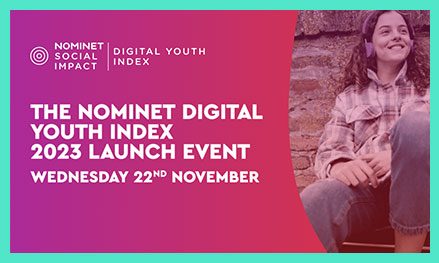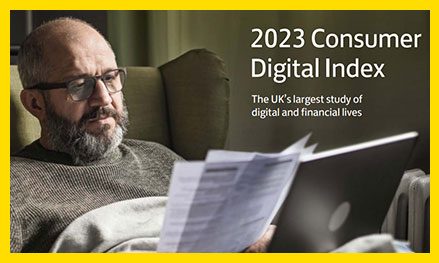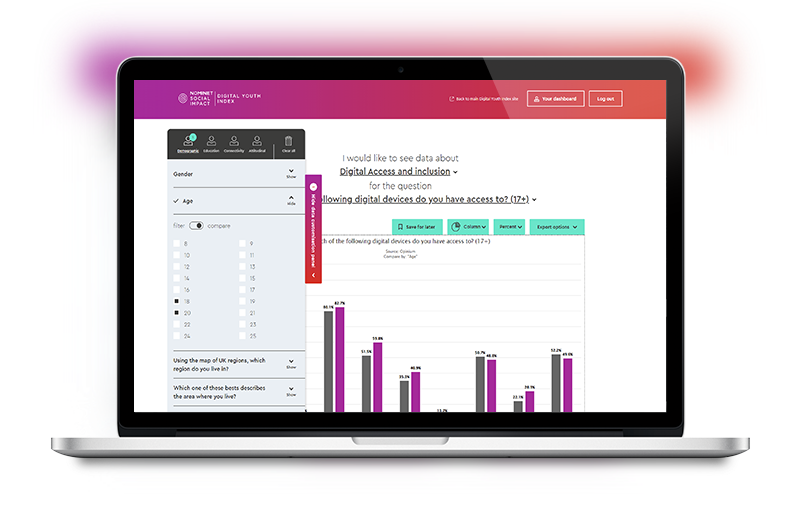I am incredibly proud to be part of the advisory panel for Nominet’s Digital Youth Index. I’ve had the opportunity to explore and debate the findings for this third year with the other advisors and the Nominet team.
Each year, as we gather as a group, I find myself pondering how we should interpret the Index’s wealth of facts, figures, trends and voices. What does it all add up to? What is it trying to tell us?
This year the Index has been making me think about what kind of society we want. What ideals are we striving for, and how does the Index shed light on our current shortcomings in achieving those ideals? Can it point us in a direction that fosters positive change?
I am a 50-year-old white man that grew up on the outskirts of London in the 70s, who now finds himself with three children in a remote part of Norfolk. I have personally experienced the role that technology can have in shaping and influencing my life, the people around me and my children. I’ve spent years thinking about how digital technology can unlock opportunities for everyone: to learn, express themselves, connect with others and new ideas, challenge assumptions, and coordinate our collective efforts. But I probably don’t yet have a clear articulation of an ideal society that is making the best use of digital.
What I do know is that it would contain something about equalising opportunities. If digital technology is to be a profoundly empowering tool, surely it has to be in everyone’s hands, with easy, clear and equal routes to access. I’d also want something in my ideal about young people being able to participate in empowering networks, having access to safe spaces for exploration and sharing, and ways to be inspired beyond the constraints of their physical setting.
This year, in reading The Digital Youth Index report, and looking at the data, I have a fear that digital technology is increasingly something that exacerbates inequality and may even be an effective engine for speeding it up.
Location, employment, and education are impacting young people’s digital aspirations.
The Index gives clear indications that young people in urban areas think differently about the role of digital in their lives to young people in rural areas. For example, it is more likely that most of their interactions with friends are online (49% urban vs. 40% rural) and also they are more likely to state that social media has a negative impact on people like them (42% urban vs. 34% rural). There is a marked difference in digital aspirations based on where a young person is living. I have experienced this first hand in Norfolk’s rural schools through my kids and various learning activities I have done around digital skills in primary schools – young people here are often unaware of how to develop their digital skills and how that might then open up new and interesting possibilities for their working lives.
We also see a major difference in attitudes about digital between young people who are not in employment, education or training (NEET) and those in Higher Education.
These are classic dividing lines for sure, but they may be a signal to us that the hype about the transformational power of digital technology is in fact playing out along the old dividing lines for opportunity. 78% of young people in Higher Education are saying to us that digital skills are essential for their future, as opposed to 62% of young people who are NEET.
When asked if a young person would like a career that uses advanced digital skills, only 41% of people who are NEET said yes, a fall from 54% in 2022. While this is a big drop, we need to be aware that although the same question was asked in both years of the Digital Youth Index, this year some clarity was added around the term ‘advanced digital skills’. Young people in Higher Education had a very different response with 58% saying yes. We should be cautious about jumping to conclusions about this year-on-year difference and we are well aware that the question is likely to be interpreted in a range of different ways by young people. Still, I think we should keep an eye on this in 2024 to see if this is a downward trend in aspiration. This could be telling us something significant about what young people are able to believe about their future opportunities based on the constraints of their circumstances.
Ideally, I hope that digital skills and technology should be something young people feel can help them transcend barriers.
Digital Access index score drops as young people struggle to access learning devices.
Another significant thing that we saw in this year’s Index is that the Digital Access pillar has fallen from a low score of 62% in 2022 to 57% this year. 14% of young people across the Index lack access to a learning device (a laptop or desktop computer), critical to their education, which equates to 2 million across the UK. 1 in 5 (20%) young people who are NEET do not have access to a laptop, desktop or tablet computer – what we refer to as a ‘learning device’.
This is the kind of pernicious problem that affects young people’s lives and has long term consequences for them and wider society. The idea that young people are ‘digital natives’ is too easy a characterisation and lacking in nuance. A young person’s life might be deeply affected by the way digital technology has permeated our culture and society, but someone with no or limited access to digital technology simply isn’t getting the advantages.
What is our ideal? How can digital opportunity really work in young people’s lives?
Young people are feeling the effects of economic inequality and it doesn’t look like digital technology is helping to rebalance that. If, like me, you lived through the hazy digital optimism of the 90s, this feels like a dream gone wrong. This is something we need to be clear eyed about. Digital is part of the pre-existing systems that unevenly distribute opportunity and we can certainly zoom out and ask questions about the role of capitalism, big tech, government, regulation, education and so on. We can consider systemic change and try to identify the levers to make those changes.
But I think before all that, or to harness the utility of our institutions, we need a better articulation of the ideal for our current time and to find out if there is any consensus for it. We need to ensure that our ideals are person-centred – we should be able to understand how we want digital opportunity to work by describing its specific role in young people’s lives and being able to imagine better life journeys supported by digital technology.
We need to have listened carefully to young people and done the work to understand that they have a different view of the world, a different set of concerns and needs and whole new ways of being to previous generations.
It won’t be enough to make broad assertions about better lives, as that will make it very hard to know what specifically needs to change and impossible to track whether change is happening.
Of course, many are trying to do this already – thank goodness, often by listening closely to young people themselves. One interesting approach is the team developing a minimum digital living standard – led by my fellow Digital Youth Index advisors Professor Simeon Yates and Dr Emma Stone, amongst others. It is a cunning idea to be able to describe a baseline – which we know is going to be hard enough to achieve but plays on our acceptance of ideas like the minimum living wage enough that we feel it must be possible. Personally, I’d like to see a sister project for this one imagining the maximum standard we can be working towards.
Nominet has also funded some really interesting work with the Scouts, which my company Unthinkable played a role in, to update the Digital Citizenship badge. What was great about that project was listening to young people tell us not just about their fears but also their dreams about the potential for digital technology.
As we take a look at the Index this year and consider the commentary around it, let’s ask some questions of ourselves. Have we created the opportunity to directly listen to young people? Can we then describe a better digital future for those young people? Does that imagined future not only address the difficult things like harm and inequality, but also describe how we can grow the range of opportunities that technology can support in young people’s lives? It really needs to.
Share this article







